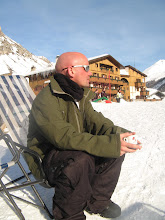Horror in Haiti - James Martland

An earthquake measuring 7.0 on the Richter Scale, hit Haiti in the Caribbean on Tuesday, January 12, 2010 just before 5 p.m. local time. The effects of the earthquake have been more severe than they might have been due to the proximity of the epicentre to the capital city, Port-au-Prince. The epicentre was only 10 miles southwest of the capital city. The earthquake is the worst in Haiti for 200 years. There were many severe aftershocks, which meant that the people who did survive were frightened that another earthquake or quakes were following and causing further damage to buildings.
The actual quake occurred along the Enriquillo-Plantain Garden Fault, a virtually immovable rock that runs from Montego Bay in Jamaica to the southern part of the island of Hispaniola, which Haiti shares with the Dominican Republic. The fault was pushed by the Caribbean Plate, which moves about 20 millimeters east each year and on this occasion, it moved the fault line. The movement happened six miles underground, which made the earthquake even bigger. The fault is similar to the San Andreas fault in California.
Many residents in Haiti live in tin shacks on the side of steep hills, so the damage the earthquake did was huge. However, the quake not only destroyed the poorer shanty buildings, but also destroyed much stronger structures, including hospitals, schools and the presidential palace. Three million people are now without shelter and temperatures during the days are extremely hot. The president himself is currently living at the airport. No one knows how many people have died, but estimates range from 30 to 50,000 and maybe even as high as 100,000. “Everybody is just totally, totally freaked out and shaken,” Henry Bahn, an American official visiting Haiti, told The Associated Press. “The sky is just gray with dust.”
Without this earthquake, Haiti had problems, dire poverty, political coups and fighting and by the end of 2008, four hurricanes had hit the island and flooded whole towns, knocked out bridges and left the people in a desperate condition. They are therefore less able to cope with this latest disaster.
Foreign aid is being organised and Britain, America, China, France, Mexico and many other countries have pledged money, medical supplies and food. Unfortunately, the port is not functioning and communications are down, so it has proved very difficult to get these supplies into Haiti. Many people have reached the nearby Dominican Republic, but are struggling to get into Haiti. As a result, the people are dying unnecessarily, as there are two few doctors and supplies. The injured are lying next to the dead. 7000 people were buried in one mass grave today, which is Friday.
Well done James. He used the BBC website and the telegraph website.
Also look at this map from the BBC WEBSITE


<< Home